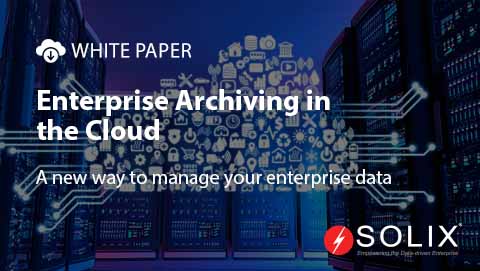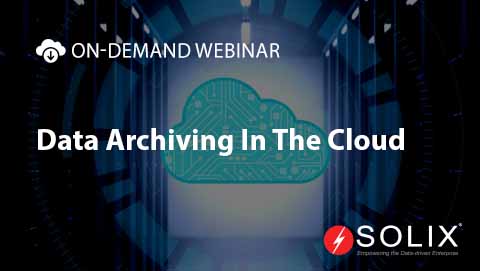Data Archiving
What is Data Archiving?
Data archiving is the process of identifying, selecting, and storing valuable data for long-term access and preservation. This data is typically inactive, meaning it’s not actively used in daily operations but may be needed for various purposes in the future.
Who Needs to Archive Data?
Organizations across various sectors need data archiving for several reasons, including:
- Compliance:
Many industries, such as healthcare, finance, and government, have legal and regulatory requirements to retain data for specific periods.
- Legal Holds:
Organizations involved in ongoing litigation may need to preserve relevant data for legal proceedings.
- Historical Reference:
Archived data can be valuable for historical research, trend analysis, and auditing purposes.
- Strategic Decision Making:
Archived data can provide insights into past performance and inform future strategies.
Compliance and Data Archiving:
Data archiving is crucial in ensuring compliance with regulations like HIPAA, GDPR, and PCI DSS. To ensure compliance, organizations should consider the following strategies:
- Develop a data retention policy:
This policy should define which data needs to be archived, for how long, and the specific format it needs to be stored in.
- Implement a consistent and automated archiving process:
Automating data archiving helps ensure all relevant data is captured and stored according to the policy.
- Maintain accurate and complete metadata:
Metadata provides crucial information about the archived data, such as its origin, creation date, and retention period, facilitating efficient retrieval for compliance purposes.
- Employ robust security measures:
Archived data, especially sensitive information, requires strong encryption and access controls to prevent unauthorized access and ensure data integrity.
Benefits of Data Archiving:
- Improved storage efficiency:
Archiving inactive data frees up space in primary storage systems, improving overall storage efficiency and performance.
- Reduced costs:
Archiving data in cost-effective storage tiers compared to primary storage can lead to significant cost savings.
- Enhanced disaster recovery:
Archived data serves as a secondary source of information in case of disasters or system failures.
- Better information governance:
Effective data archiving helps organizations manage their data more effectively and ensure its long-term accessibility.
Challenges of Data Archiving:
- Cost considerations:
While archiving saves on primary storage, implementing and maintaining an archiving system can incur costs.
- Data integrity:
Ensuring the long-term integrity and usability of archived data over time can be challenging.
- Retrieval challenges:
Retrieving specific data from an archive can be complex, requiring proper indexing and metadata management.
- Security concerns:
Protecting sensitive data archived over extended periods requires robust security measures.
Data Archiving vs. Data Backup:
While both data archiving and data backup involve storing data, they serve distinct purposes:
- Data archiving:
Focuses on long-term preservation of inactive data for compliance, historical reference, or future use.
- Data backup:
Creates copies of active data for disaster recovery, allowing for quick restoration in case of system failures.
On-premises vs. Cloud-based Archiving:
Organizations can choose between storing archived data on their own servers (on-premises) or in cloud storage solutions:
- On-premises archiving:
Offers greater control over data security and privacy but requires upfront investment in hardware and software.
- Cloud-based archiving:
Provides scalability, cost-effectiveness, and easier management but may raise concerns about data security and vendor lock-in.
Data archiving is a crucial strategy for organizations to manage their data effectively, ensuring compliance, preserving valuable information, and achieving long-term cost savings.
FAQs
What types of data can be archived?
Data archiving can encompass various data formats, including structured data (databases, spreadsheets), unstructured data (emails, social media posts, video files), and semi-structured data (logs, configuration files).
How long should data be archived?
The retention period for archived data depends on legal regulations, industry standards, and organizational policies. Some data may need to be retained for years, while others can be archived for shorter periods.
What are some best practices for data archiving?
- Develop a clear data archiving policy.
- Classify data based on its sensitivity and retention requirements.
- Choose a reliable and secure archiving solution.
- Implement automated archiving processes.
- Maintain accurate and detailed metadata.
- Regularly test data retrievability from the archive.
What are the security considerations for data archiving?
Security is paramount. Here are some key considerations:
- Encrypt sensitive data at rest and in transit.
- Implement access controls to restrict unauthorized access.
- Regularly monitor and update security measures.
How can I ensure the long-term usability of archived data?
Here are some strategies:
- Use open and vendor-neutral data formats.
- Migrate data to newer formats periodically to avoid obsolescence.
- Regularly test data integrity to ensure its accuracy over time.





